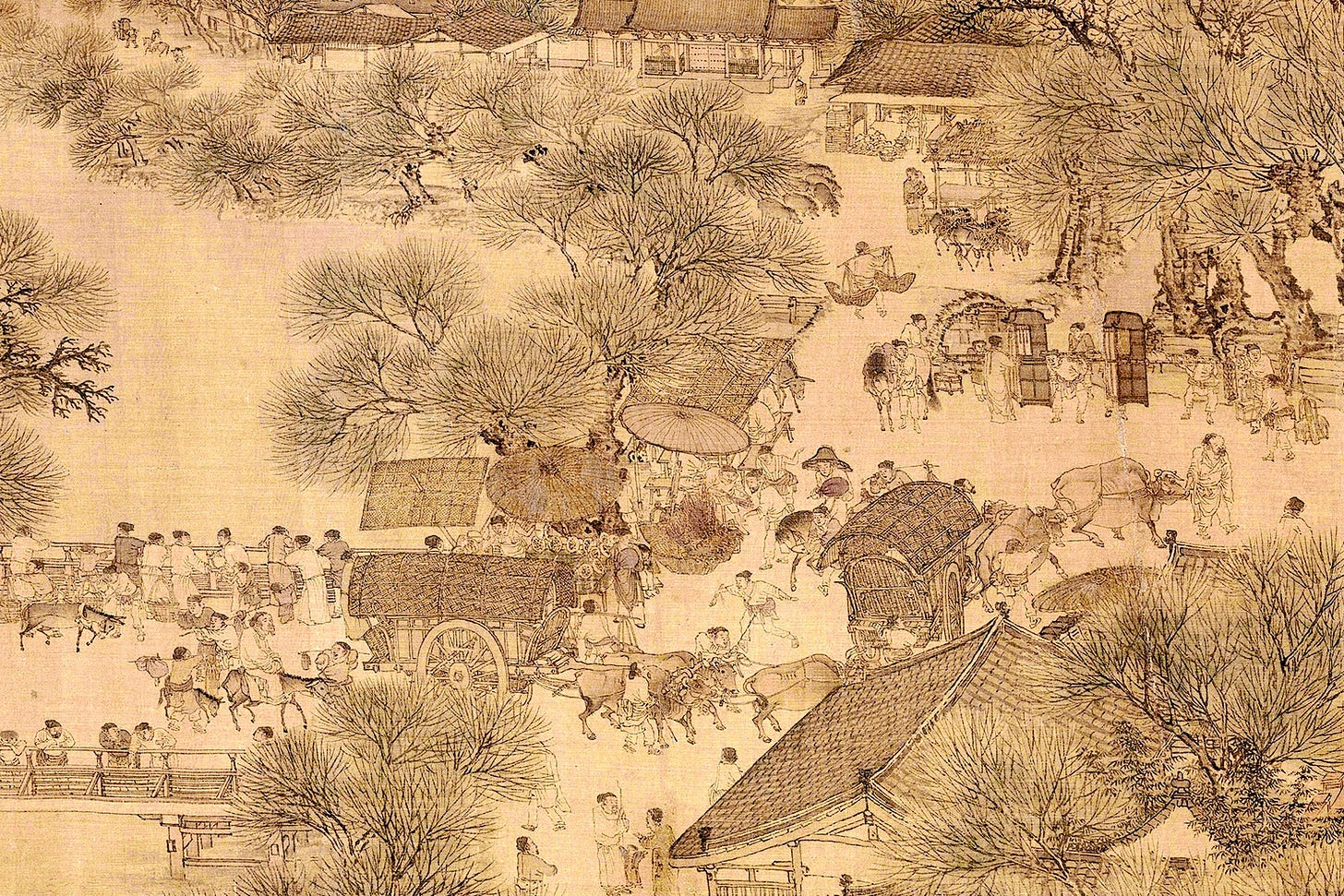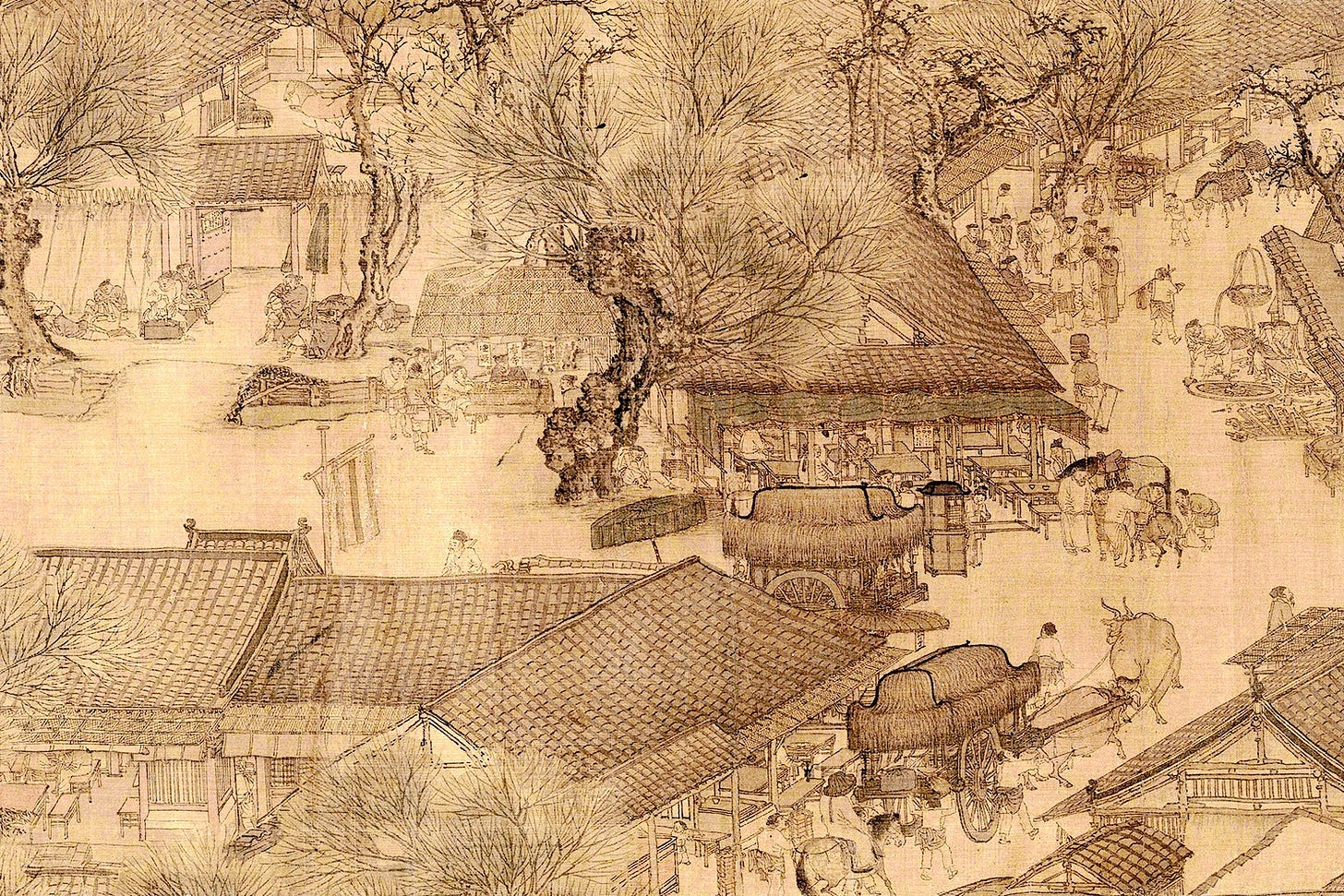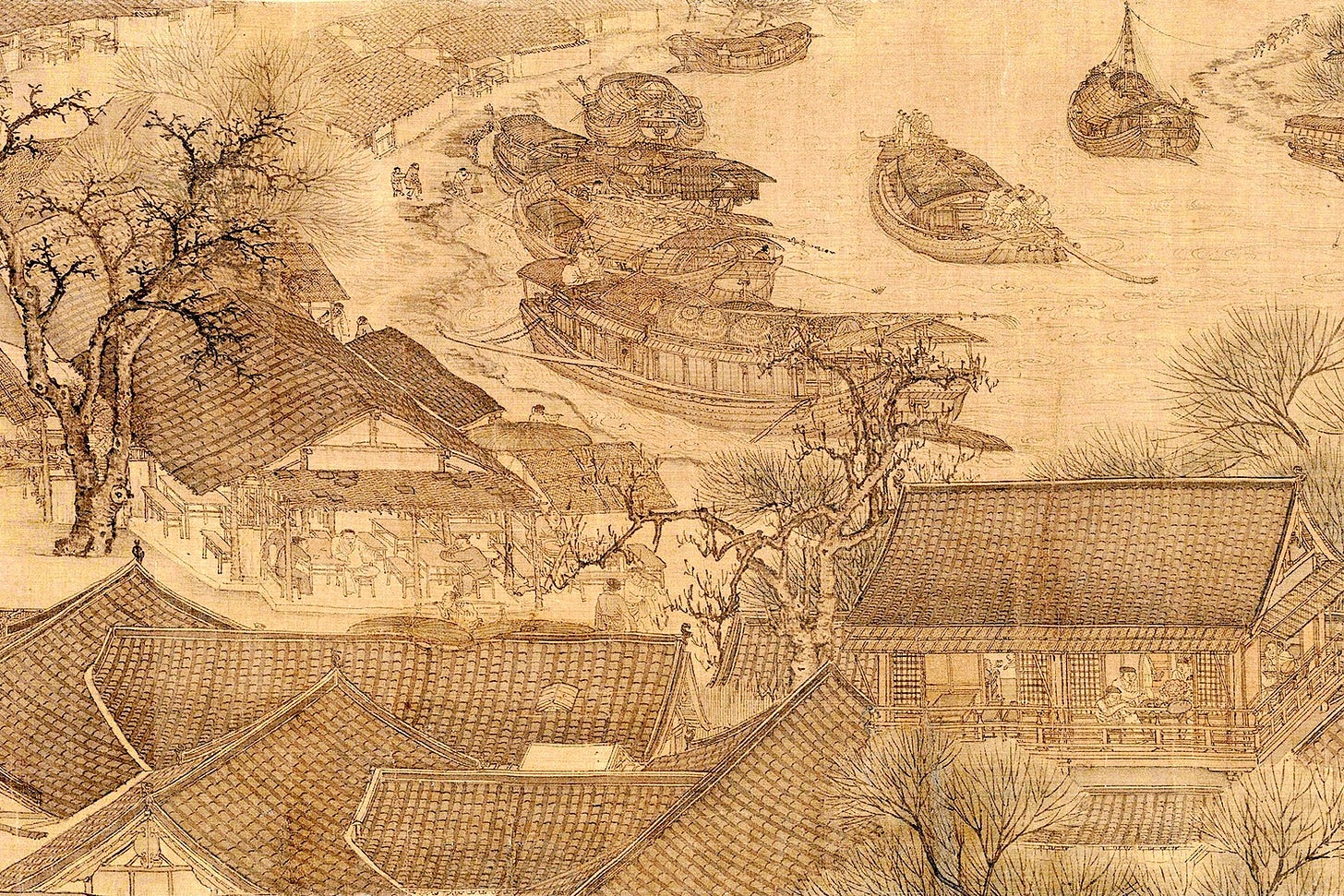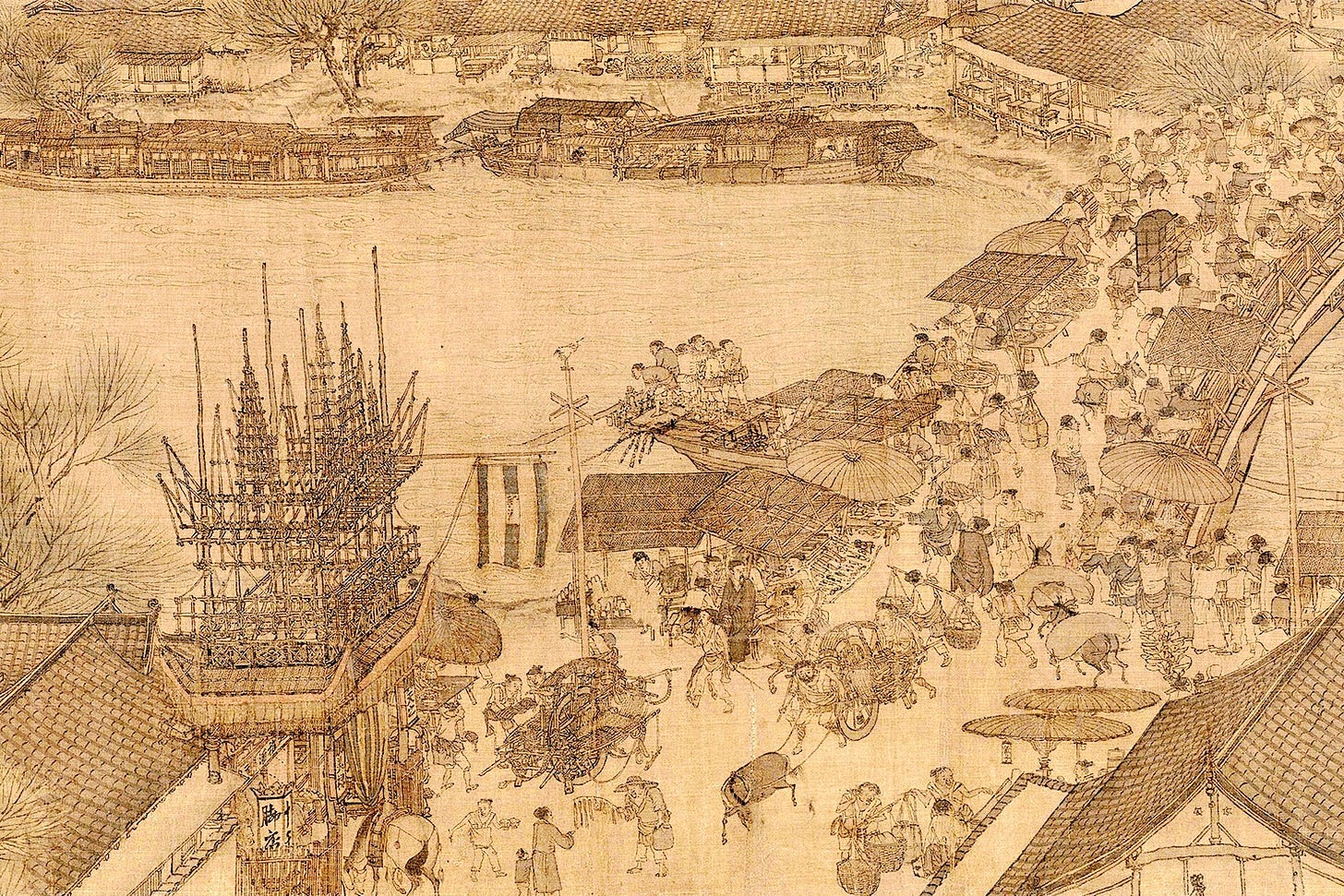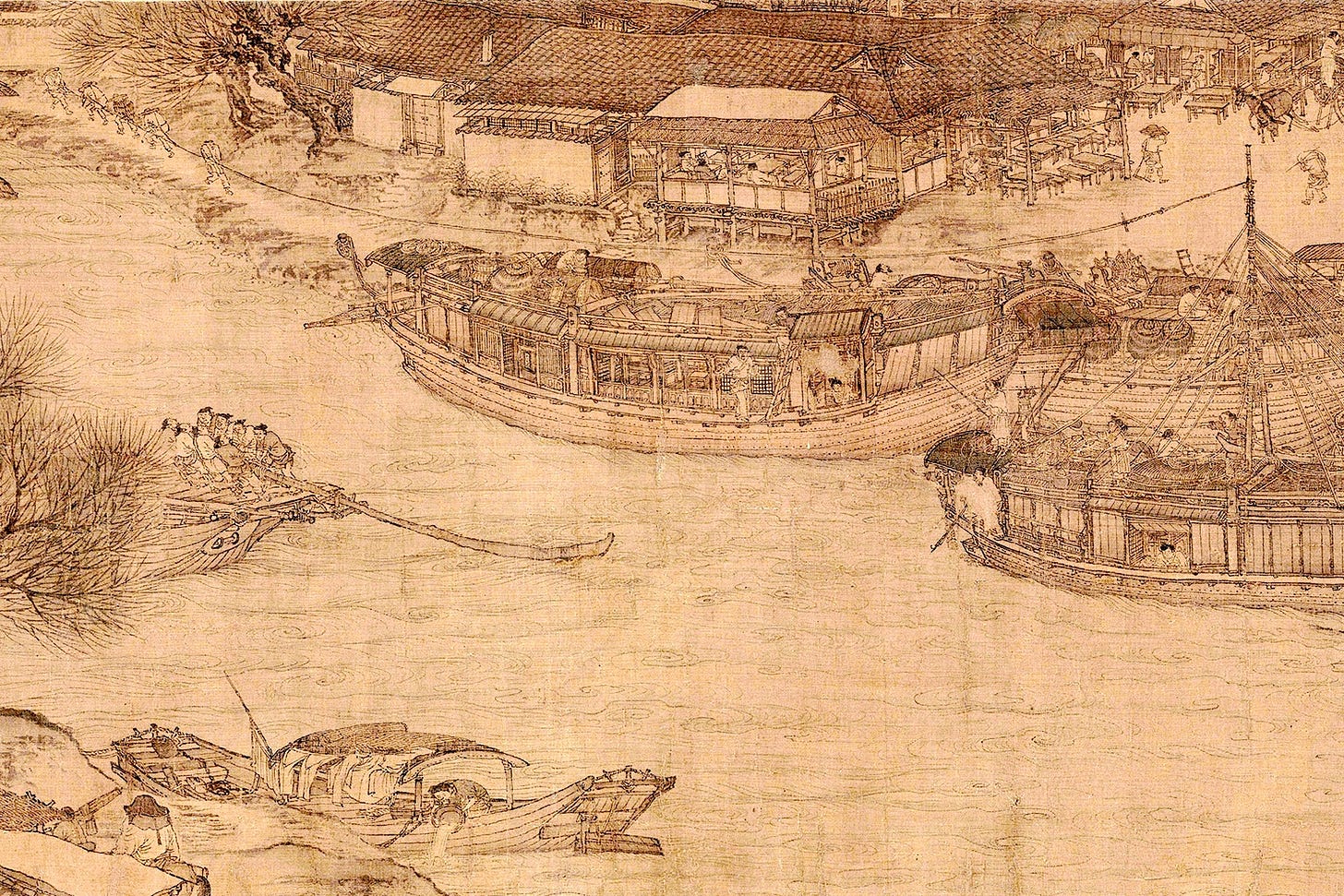#39 The Four Ancient Capitals of Northern Song Dynasty
To understand Chinese history, ancient paintings are a good source which today's article illustrates.
Post Category : ✅Chinese History
=======================================================
The below description of 清明上河图 "Along the River During the Qingming Festival" caught my attention:
"𝙷𝚘𝚞𝚜𝚎𝚍 𝚒𝚗 𝚝𝚑𝚎 𝙿𝚊𝚕𝚊𝚌𝚎 𝙼𝚞𝚜𝚎𝚞𝚖, 𝚝𝚑𝚎 𝚙𝚊𝚒𝚗𝚝𝚒𝚗𝚐 "𝙰𝚕𝚘𝚗𝚐 𝚝𝚑𝚎 𝚁𝚒𝚟𝚎𝚛 𝙳𝚞𝚛𝚒𝚗𝚐 𝚝𝚑𝚎 𝚀𝚒𝚗𝚐𝚖𝚒𝚗𝚐 𝙵𝚎𝚜𝚝𝚒𝚟𝚊𝚕" 𝚋𝚢 𝚉𝚑𝚊𝚗𝚐 𝚉𝚎𝚍𝚞𝚊𝚗 𝚏𝚛𝚘𝚖 𝚝𝚑𝚎 𝚂𝚘𝚗𝚐 𝙳𝚢𝚗𝚊𝚜𝚝𝚢 (𝟿𝟼𝟶-𝟷𝟸𝟽𝟿) 𝚘𝚏𝚏𝚎𝚛𝚜 𝚊 𝚍𝚎𝚝𝚊𝚒𝚕𝚎𝚍 𝚙𝚊𝚗𝚘𝚛𝚊𝚖𝚒𝚌 𝚟𝚒𝚎𝚠 𝚘𝚏 𝚕𝚒𝚏𝚎 𝚒𝚗 𝙱𝚒𝚊𝚗𝚓𝚒𝚗𝚐, 𝚌𝚊𝚙𝚒𝚝𝚊𝚕 𝚘𝚏 𝚝𝚑𝚎 𝙽𝚘𝚛𝚝𝚑𝚎𝚛𝚗 𝚂𝚘𝚗𝚐 𝙳𝚢𝚗𝚊𝚜𝚝𝚢 (𝟿𝟼𝟶-𝟷𝟷𝟸𝟽). 𝚆𝚒𝚝𝚑 𝚒𝚝𝚜 𝚙𝚕𝚎𝚝𝚑𝚘𝚛𝚊 𝚘𝚏 𝚏𝚒𝚐𝚞𝚛𝚎𝚜, 𝚋𝚞𝚒𝚕𝚍𝚒𝚗𝚐𝚜 𝚊𝚗𝚍 𝚟𝚎𝚑𝚒𝚌𝚕𝚎𝚜, 𝚝𝚑𝚎 𝚠𝚘𝚛𝚔 𝚠𝚊𝚜 𝚊 𝚟𝚒𝚜𝚞𝚊𝚕 𝚍𝚘𝚌𝚞𝚖𝚎𝚗𝚝𝚊𝚝𝚒𝚘𝚗 𝚘𝚏 𝚖𝚎𝚝𝚛𝚘𝚙𝚘𝚕𝚒𝚝𝚊𝚗 𝚕𝚒𝚏𝚎 𝚍𝚞𝚛𝚒𝚗𝚐 𝚝𝚑𝚎 𝚑𝚎𝚢𝚍𝚊𝚢 𝚘𝚏 𝟷𝟸𝚝𝚑-𝚌𝚎𝚗𝚝𝚞𝚛𝚢 𝙲𝚑𝚒𝚗𝚊." (text from China Plus Culture).
We have heard of Beijing (lit. Northern Capital), Nanjing (Southern Capital) etc but what does the meaning of Bianjing 汴京 entail?
The Chinese character Bian 汴 came from the Bian River 汴水 which was an ancient river partly located within the borders of China's Kaifeng City, Henan Province. Therefore Bianjing derived its name from the Bian River and it was the official capital of Northern Song Dynasty.
Incidentally, Bianjing was also known as 东京 Dong-jing lit Eastern Capital then and if you are into Japanese, you would know that the kanji word for To-kyo is 东-京 i.e. Eastern Capital. Bianjing was initially known as Bian Liang 汴梁 or Dong-jing the Jurchens conquered most of North China during the Jin–Song Wars in 1127 and changed the name to Bianjing.
But Northern Song Dynasty was also known of having secondary capitals (副都/陪都) in other three directions i.e. North, South and West, see attached. They are not to be confused with the current Beijing and Nanjing as these secondary capitals were located in the current Henan and Hebei provinces then.
Secondary capitals are cities that are strategically located to defend against enemies and so they functioned like a capital i.e. given authority to make decision. This was critical since making Bianjing the decision authority would mean the state would not react in time when the enemy mounted a sudden attack.
Finally, some images of the awesome "Along the River During the Qingming Festival" painting are attached and there are nine of them as it measures 26 cm x 5.25 m. It depicts the boisterous Bianjing where good economic growth generated a buzz in the capital. (Images credited to China Culture Plus)






